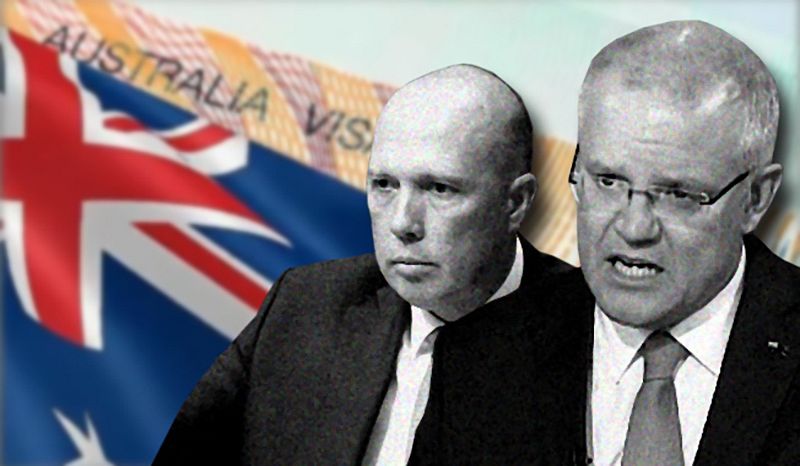The Coalition has been sending mixed messages regarding its position on immigration visas, writes Abul Rizvi.
A STRING of immigration-related articles in The Australian on 5 September 2019 and on 7 September 2019 again dutifully conveyed the Government’s mixed messages on immigration policy without asking a single question about the inherent inconsistencies and loss of control over Australia’s visa system. The Government continues to promote three very separate messages on immigration to three separate constituencies.
Message 1: Targeting the people regularly caught in gridlocked traffic in our major cities, the Government’s message is that it is “busting congestion” by cutting the permanent migration program from 190,000 per annum under Labor to 160,000 per annum and developing new visas to encourage migration to regional Australia rather than to the major cities.
Never mind that it was Morrison as Immigration Minister who formally linked the migration program at 190,000 per annum to budget figuring in the 2014 Budget. That made it much harder for Peter Dutton to cut the program. Remember Morrison’s argument to Tony Abbott that the migration program could not be cut without a very large loss to the Budget?
We are also expected to ignore the fact it was Morrison who started a steep decline in the use of regional visas from 2013-14 onwards. But Morrison would know memories are short, especially at The Australian.
Message 2: To its business constituency, the Government’s message is: don’t worry about the cuts to the permanent migration program because we are increasing net overseas migration to the highest sustained levels in Australia’s history. This will involve long-term temporary migration being increased to more than offset the reduction in permanent migration.
Remember, net overseas migration is the official measure of the impact of migration on population growth.
If the Government’s net overseas migration forecasts are realised, the number of long-term temporary entrants in Australia will need to increase from around 2 million presently to over 3.5 million by 2030.
By conveying this message via an appendix to Budget Paper No 3, the Government ensures most people hearing ‘Message 1’ will not learn about ‘Message 2’.
The Government has also quietly been reversing many of the ham-fisted changes Dutton made to long-term temporary skilled migration to keep its business constituency happy.
The large forecast increase in net overseas migration is also required to underpin the Government’s very rosy long-term economic growth assumptions in the 2019 Budget.
But if the business community looks closely at the composition of net overseas migration, it would find around a quarter of that is people arriving on visitor visas and then applying to remain. Hardly the optimal way of managing migration.
Message 3: To those people inclined to vote One Nation in particular, the message is that the Government is keeping our borders secure by being tough on boat arrivals, including those such as the Biloela family.
That message assumes One Nation type voters will never hear about the Government’s loss of control over the visa system highlighted by the fact in the last six years we have had more people apply for asylum than during any other six-year period in Australia’s history — they came mainly on visitor visas.
It also requires voters to ignore the fact there are around 100,000 people currently in Australia who are either seeking asylum, have been refused asylum but are still in Australia or are on some sort of temporary protection visa. This cohort has been growing at around 2,000 applications per month in recent years.
If the Government tries to use the way it managed the Biloela family as a template for managing the current asylum seeker caseload, the cost will run into the many billions of dollars and take many years — that is assuming the Government ever gets on top of the issue.
The fact that funding for visa processing in the 2019 Budget shows a sharp decline over the next few years tells us the Government has no plans for dealing with the growing asylum seeker caseload and that things will get a lot worse before they get any better.
The Government desperately needs a plan to regain control of the visa system and deal with the rapidly growing asylum seeker caseload fairly, humanely and cost-effectively. Judicious and timely use of ministerial intervention will inevitably be a part of that plan if the Government is to limit the potential costs.
And to those at The Australian arguing this will result in a deluge of boat arrivals, I have two simple questions.
Firstly, when the Howard Government had boat turnback policy in place and resettled hundreds of refugees from Manus and Nauru in Australia and New Zealand in the first half of the 2000s, why didn’t the boats restart then?
Secondly, what alternative strategy would they suggest for dealing with the Government’s loss of control over our borders that doesn’t blow the Home Affairs budget out of the water?
https://independentaustralia.net/politics/politics-display/coalition-loses-control-of-visa-system,13104


